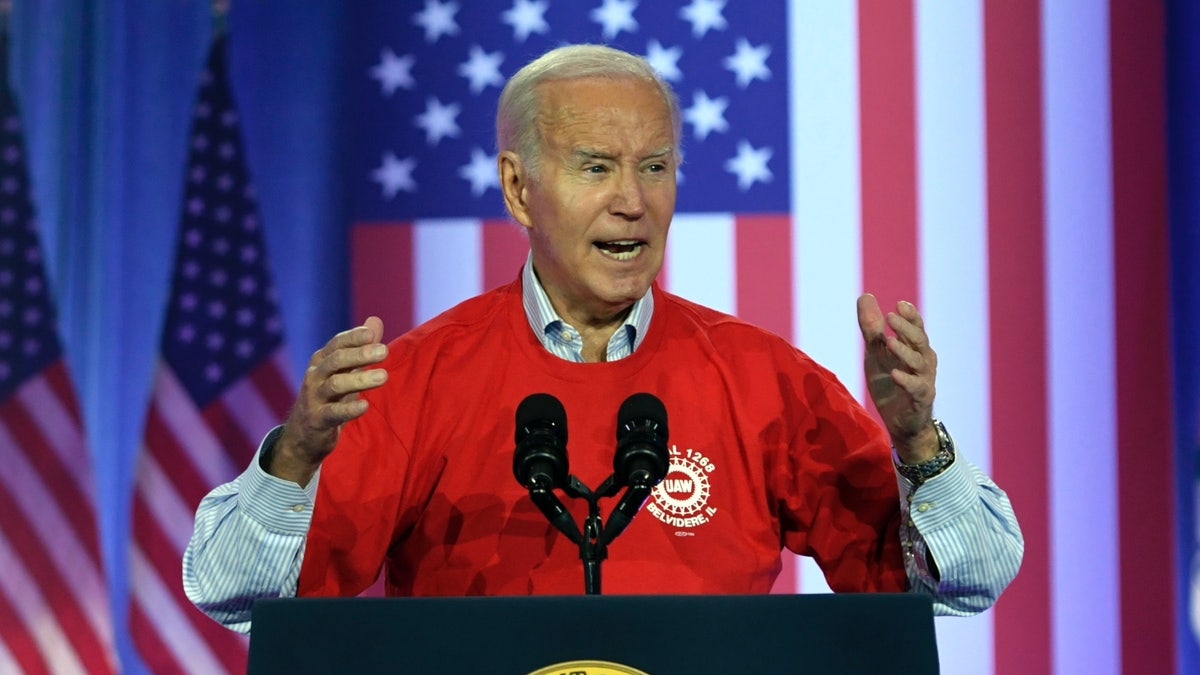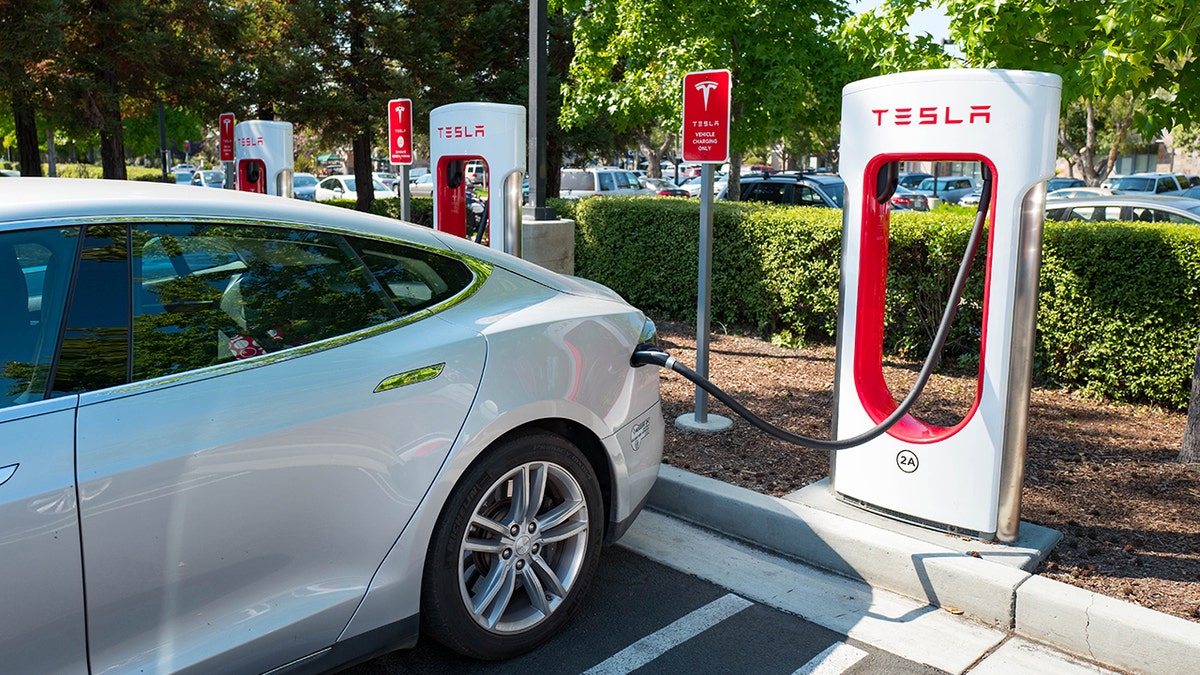As President Biden’s goal to shift to electric vehicles moves closer, some energy experts say the administration needs to look at power infrastructure before pushing for an increase in sales.
“They’re promoting policies that will drive the sale of electric vehicles but not necessarily the use of electric vehicles,” former Federal Energy Regulatory Commission Chairman Neil Chatterjee said.
The number of electric vehicle charging ports in the U.S. has nearly doubled in the past three years. Public charging ports account for around 88% of all EV charging ports. However, many owners also charge at home, where it’s cheaper and easier to plug in overnight.
“The real challenge that I’m seeing is that we just don’t have the charging infrastructure in place around the country to really alleviate concerns that drivers have, particularly about range anxiety,” Chatterjee said.
WHITE HOUSE TAKES ACTION TO FORCE GOVERNMENT WOKERS TO TRAVEL VIA ELECTRIC VEHICLE, RAIL
A BMW electric vehicle sits parked at a Volta EV charging station in California. (Justin Sullivan)
According to the Department of Transportation, there are three different levels of public charging ports. Only about 200 are level one. Those can take more than 50 hours to charge a vehicle from empty to 80% full. Most public stations are level two.
Those can charge a vehicle to 80% in four to 10 hours. Just 15% of public chargers are fast charging or level three. Those take the least amount of time but are still not as quick as a trip to the gas station. It takes between 20 minutes to an hour to get a vehicle to 80% charged.
MAINE FORCED TO DELAY VOTE ON EV MANDATE AMID WIDESPREAD POWER OUTAGES
“People want to charge their cars really fast, and so that’s a lot of electricity in a short amount of time. It’s not the way the grid is set up to operate today,” National Rural Electric Cooperative Association CEO Jim Matheson said.
“Every one has its own set of complexities, and it’s hard to get these things built. These things don’t just happen overnight, and you’ve got to get the permitting. So, it’s not as easy as people make it out to be.”
In 2021, when President Biden signed the $1 trillion infrastructure bill into law, around $7.5 billion of that was allocated for building electric vehicle charging stations. It took more than two years for the first fast charging stations to open.

President Biden signed the $1 trillion infrastructure bill into law in 2021. (Paul Beaty)
“You have these national programs as a one-size-fits-all approach. It doesn’t work. And, in this case, the uptake for this has been really slow,” Matheson said. “I represent a lot of the rural areas where there’s not as big of an uptake on electric vehicles because the range people have to drive in their vehicle every day.”
The Energy Department is working to address range concerns. It’s tracking locations across the U.S. where an electric vehicle road trip could be possible using what the department calls fuel corridors. Most on the department’s website are still in the planning stages. Those in place are mostly along the East and West coasts. A 2,400-mile road trip along Route 66 is not yet possible in an electric vehicle.
“More electricity sounds good in a lot of ways for the people I represent. But, on the other hand, we want to make sure it’s delivered in a reliable, affordable way,” Matheson said. “In this case, you’re looking at these infrastructure needs that are going to boost cost. And, also, when you have this increased electric demand, we’re concerned it affects reliability, and we want to keep the lights on.”

A 2,400-mile road trip along Route 66 is not yet possible in an electric vehicle. (Smith Collection)
Wireless charging roads could be the infrastructure of the future. Those are being installed by Swedish company Electreon. It completed the first project stateside in Detroit recently. Coils are laid beneath the asphalt and a receiver is connected to the vehicle. As the car travels, the battery unit is powered directly. The company is also working on several wireless charging projects across eight countries.
Some of those include bus terminals in Israel, delivery truck loading docks in Sweden and ports in China.
CLICK HERE TO GET THE FOX NEWS APP
“If the market through innovation can have these technological breakthroughs that enable us to have this futuristic advancement in how our transportation sector functions, that’s amazing,” Chatterjee said. “I hope that that happens, but I want the market to drive that.”